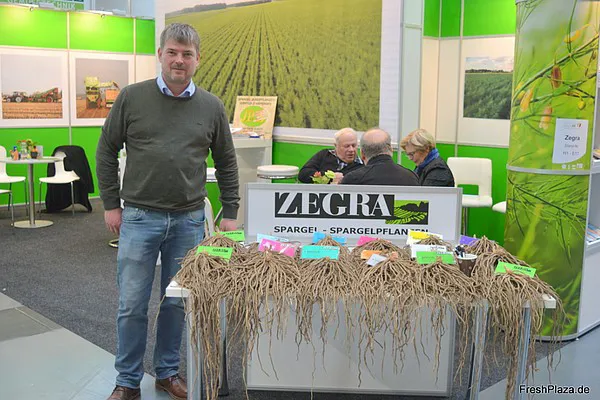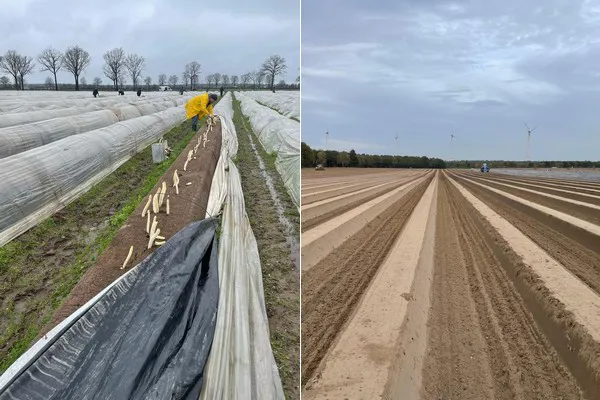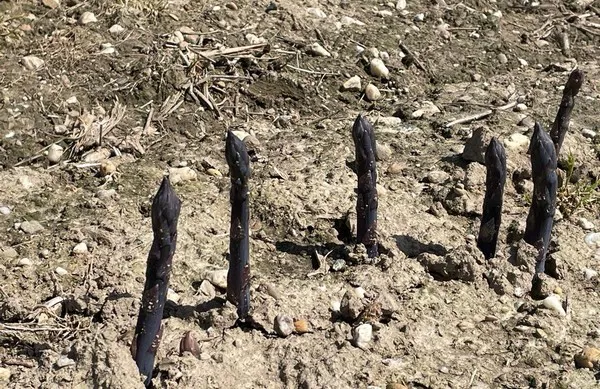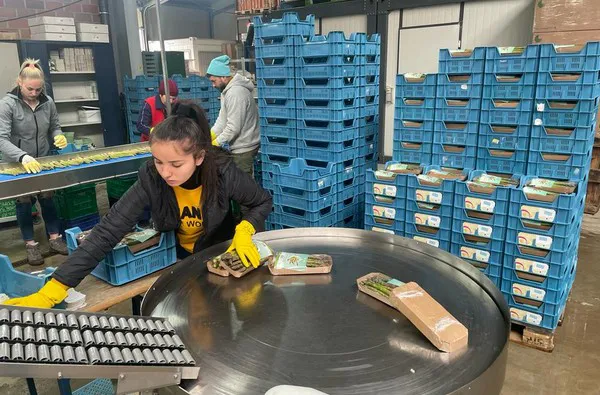Alexander Willemsen from Zegra Asparagus World on this year’s asparagus season:
“We are still harvesting German green asparagus for just under a week”
This year’s asparagus season will be remembered as satisfactory. “Except for the last three weeks from the beginning of June, we had consistently good qualities, which is mainly due to the cool weather. On the part of the food retailers, sales of German asparagus were further increased by means of advertising campaigns. We also managed to keep the cost increases under control, especially labour costs. It helps us that the profit margin on asparagus is not so low, in contrast to many other fruit and vegetable products,” says Alexander Willemsen, joint managing director of the Lower Rhine asparagus importer Zegra Spargelwelt GmbH & Co. KG.
At the end of March, the first early asparagus could already be pricked under triple cover, Willemsen continues. “We were one of a few, as many have refrained from multiple covering due to the high labour costs. Due to the fact that asparagus is usually not so desirable in direct marketing in March, we then opened our stands only a few days later in the first week of April. The first few days were excellent, then there was a slight, not unusual decline. Overall, the reluctance to buy due to inflation was most noticeable in direct marketing and less so in retail.” Alexander Willemsen at the Zegra stand at last year’s expoSE in Karlsruhe
Alexander Willemsen at the Zegra stand at last year’s expoSE in Karlsruhe
Green asparagus still on the rise
Overall, he says, this year’s season was unique in many ways. Willemsen: “Due to the heavy rainfall in spring, we were not able to bunch our late plants until around 5 May. This meant that we had too little yield at the end of the month, whereas normally there is plenty of asparagus at the end of April/beginning of May. Accordingly, we had to call off our last group of harvesters because we could not keep them busy. Due to the heat, the price of white asparagus dropped in the last three weeks of the season, while green asparagus boomed because of the nice barbecue weather. At the auction, the price of white asparagus tripled within two days, while green asparagus prices doubled. We have never seen such extreme price jumps before.”

 Insights into asparagus cultivation
Insights into asparagus cultivation
According to Willemsen, green asparagus is still obviously in vogue. “Almost all direct marketers also produce green asparagus nowadays, although it is more difficult to continuously offer good qualities compared to pale asparagus. On the other hand, green asparagus can be offered until mid-July. This means that we will also offer green asparagus from our own cultivation to the trade for another week or so. In the green asparagus sector, we mainly produce Backlim and Cygnus.” The pleasing development of green asparagus has also prompted Willemsen to expand the green asparagus area. “Currently we have 120 hectares of white asparagus and 30 hectares of green asparagus. Next year we will be able to harvest green asparagus on about 50 hectares.”

The green asparagus will be harvested for about another week or until July 10. In addition to pale and green asparagus, they also produce purple asparagus on about one hectare.
 Insight into the preparation and packaging of asparagus
Insight into the preparation and packaging of asparagus
In addition to the production, preparation and marketing of its own fresh asparagus, the Zegra company is also involved in the propagation and trade of asparagus seedlings. “Our plants are sold all over Europe, especially to the classic asparagus-growing countries like Austria and France, but we also export to Greece, Italy and Spain. The Corona years were particularly turbulent for vegetable growing, which is why there were hardly any new entrants in the past three years,” Willemsen describes.

The asparagus from the Lower Rhine is offered in the farmers’ own stalls on the other side of the German-Dutch border. On 2 July, the last stalls were closed.
Labour shortage threatens asparagus cultivation
Labour shortages, in particular, will pose major challenges to the asparagus sector in the coming years, according to the producer and propagator. “We are still coping with climate change to some extent. Asparagus tends to come onto the market earlier, which is why the marketing window is somewhat longer. With white asparagus, however, we still have the advantage that German asparagus is preferred and that seasonality is accepted and appreciated accordingly. The labour shortage, on the other hand, is more difficult to cope with, especially for a labour-intensive crop like asparagus: Those who have organised and planned it well will probably have enough harvest helpers, but the quality and willingness to work tends to decline more. In this respect, the situation has become much worse in recent years and often more frustrating for us growers,” concludes Willemsen.
Visit the company at Interaspa on 6 and 7 September.
Images: Zegra Spargelwelt GmbH & Co. KG
Further information:
 Alexander Willemsen
Alexander Willemsen
Zegra Spargelwelt GmbH & Co. KG
Ossenbrucher Weg 10
41849 Wassenberg
Tel.: 0 24 32 – 89 27 34
Fax: 0 24 32 – 89 27 35
eMail: info@zegra.de
www.zegra.de